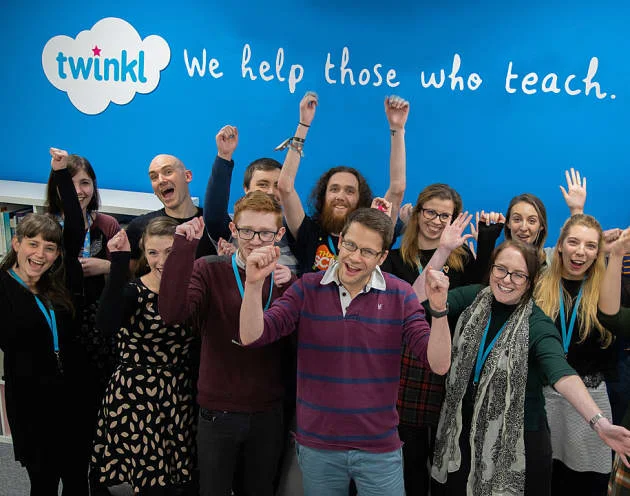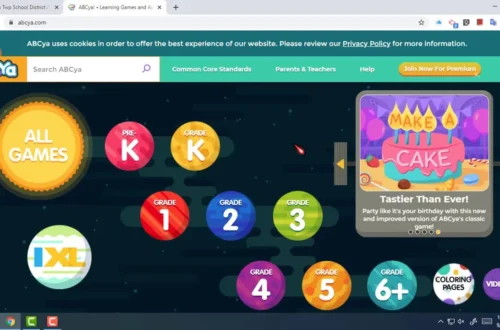Twinkl is an online educational publishing company established in 2010 and headquartered in Sheffield, UK. Its mission is simple but powerful: “to help those who teach.” Over time it has grown into a global resource hub for teachers, parents, schools, and home‐educators.
Twinkl provides a massive library of printable and digital teaching & learning resources: worksheets, ebooks, interactive games, PowerPoints, assessment tools, display posters, and more. As of recent reports, Twinkl offers access to over one million (or close to it) resources, with new content added regularly.
What started in a spare bedroom by founders Jonathan and Susie Seaton has grown into an EdTech leader serving educators in 200+ countries. During global school closures (e.g. COVID-19), Twinkl even made its resources freely available to support remote learning.
Core Features & Tools of Twinkl
Twinkl isn’t just a digital library of worksheets — it includes several powerful tools and platforms designed to streamline teaching and learning. Here are some of the standout features:
1. Twinkl Go / Learn & Go
This is a secure, browser-based tool offering interactive games, animations, and learning experiences tied closely to curriculum content. Teachers can assign resources to students, and learners can revisit them at their own pace.
2. Concept Videos
Short, focused explainer videos on science, religious education, and other tricky concepts. These are created by educators to reinforce understanding with visual aids.
3. Home Learning Hub / PlanIt Units
For those doing home education, Twinkl’s Home Learning Hub organizes “off the peg” curriculum units (called PlanIt) across age groups, integrating live lessons, resources, and planning support.
4. Editable & Customisable Resources
One of Twinkl’s vital strengths is flexibility: many resources come in editable formats (PowerPoint, Word) so teachers can tailor them to their class needs
5. Cross-Curriculum & Multilingual Support
Twinkl covers all major subjects (maths, English, science, humanities, arts) for primary and secondary levels. It also supports multiple languages (e.g. Arabic, French, German) for international users.
6. Print & Digital Delivery
Resources may be downloaded and printed or used digitally. The Twinkl mobile app facilitates access on the go, even allowing offline use.
Together, these features make Twinkl a comprehensive toolset for modern educators seeking both efficiency and pedagogical depth.
How Twinkl Supports Different Audiences
Twinkl is not a one-size-fits-all tool—it tailors support to various user groups. Let’s see how it serves different audiences:
1. Classroom Teachers
For teachers in schools, Twinkl reduces prep time massively. Ready-made lesson plans, worksheets, and assessments allow focus on instruction rather than administrative tasks.
Also, Twinkl provides display packs, classroom signs, and classroom management tools to enrich the learning environment.
2. Home Educators / Parents
Twinkl’s Home Learning Hub is a lifeline for parents teaching at home. It offers structured curriculum units, live lessons, planning guides, and resources for different age groups.
The flexibility (editable worksheets, multilingual content) is especially helpful when customizing for a child’s pace.
3. International & Multilingual Classrooms
Twinkl supports educators and learners around the globe. It offers curriculum-aligned materials for international systems, and resources in languages other than English.
This global reach means schools in diverse settings can adopt Twinkl without losing relevance.
4. Special Education & Differentiated Learning
Twinkl provides resources targeting SEND (Special Educational Needs and Disabilities) and EAL (English as an Additional Language) populations, enabling differentiated planning. This helps teachers address varied learner needs within one platform.
By serving all these audiences, Twinkl positions itself as more than a worksheet repository—it is a versatile ecosystem for teaching and learning at scale.
Strengths, Challenges & Criticisms
No platform is perfect. Below are Twinkl’s major strengths, and areas where users and critics raise concerns.
Major Strengths
- Time-saving & convenience: Teachers frequently cite the ability to “copy, tweak, and teach” as a game changer.
- High volume of resources: The sheer breadth covers nearly every topic, age group, and subject.
- Quality & reliability: Resources are developed by educators and undergo checks.
- Customisability: Editable formats let teachers adapt to their class’s needs.
- Strong global footprint: Works across curriculums and countries, with multilingual support.
Challenges & Criticisms
- Overreliance risk: Some critics argue that relying too heavily on Twinkl can stifle teacher creativity or lead to “plug-and-play” lessons without adaptation.
- Uniform design aesthetic: Because many resources use a common style, some users feel content can look generic or repetitive.
- Subscription cost concerns: Access to full premium content requires a paid subscription, which some small schools or individual educators may find expensive.
- Depth for higher grades: While Twinkl is strong in primary education, some argue its secondary or advanced content is less comprehensive compared to specialist platforms
Overall, the strengths often outweigh the weaknesses for many users — but awareness and adaptation are key.
Pricing Model & Access Options
Twinkl operates on a subscription model with various tiers offering different levels of access.
Free / Trial Access
A basic free account grants access to a limited number of free resources and a weekly free download. There is also often a free trial or demo period for the full library to allow users to test fully.
Paid Subscription Plans
Paid plans provide unlimited downloads, access to premium content, and full use of tools like Twinkl Go and editable versions.
Schools often take multi-seat or institutional licenses for multiple teachers. Twinkl offers special school licensing and packages.
Value Consideration
Many users find the cost justified by the time saved, high quality, and comprehensiveness of resources. However, for very small or underfunded institutions, balancing budget vs benefit is key.
Tips & Best Practices for Using Twinkl Effectively
To get the most from Twinkl, here are practical tips and strategies:
- Customize, don’t just use off the shelf.
Even though ready-made resources are tempting, adjust wording, examples, or layout to match your students’ needs or your teaching style. - Plan content ahead using PlanIt units.
Use Twinkl’s structured units (especially via the Home Learning Hub) to map out weeks of learning rather than scrambling day by day. - Blend digital and print formats.
Use interactive digital content (Twinkl Go, concept videos) for engagement, and printed worksheets when hands-on work or offline access is needed. - Use the “Suggest a Resource” feature.
Twinkl encourages its community to request missing resources — this helps close gaps and ensures the library evolves with user needs. - Incorporate moderation and variety.
Mix Twinkl materials with teacher-created or student projects to maintain personalization and avoid overreliance. - Leverage resource caching and offline access.
For locations with poor internet, download and save critical resources in advance via the app or platform offline mode. - Stay current with updates.
Twinkl regularly releases new content and updates aligned with curriculum changes — subscribe to newsletters or check update logs.
Conclusion
In the realm of digital education, Twinkl stands out as a powerful, multifaceted platform helping educators save time while delivering high-quality, engaging learning experiences. With a vast, ever-growing resource library, tools like Twinkl Go and the Home Learning Hub, and support for diverse contexts, it’s become indispensable for many teachers and home educators worldwide.
That said, success with Twinkl depends on intentional use — customizing materials, blending with user-created content, and avoiding overdependence. When wielded thoughtfully, Twinkl can free teachers to focus on what they do best: inspiring and guiding learners.
FAQs
1. Is Twinkl free or paid?
Twinkl offers a free basic account with limited access to resources. Full access to its library, editable formats, and advanced features (e.g. Twinkl Go) requires a paid subscription.
2. Can I use Twinkl in countries outside the UK?
Yes. Twinkl supports international curricula, provides resources in multiple languages, and is used by educators in over 200 countries.
3. Can I customize the worksheets?
Absolutely. Many resources come in editable formats (Word, PowerPoint, etc.) so you can adjust to your class’s level or style.
4. Is Twinkl suitable for secondary/high school?
While Twinkl is strongest in primary education, it also offers content for secondary levels, though some critics say its depth in higher grades is less broad compared to specialist platforms.
5. How do I manage student access in Twinkl Go?
You can create learner logins via the “Manage Learner Logins” option under “My Resources.” Twinkl lets you download login labels or share codes with students.





